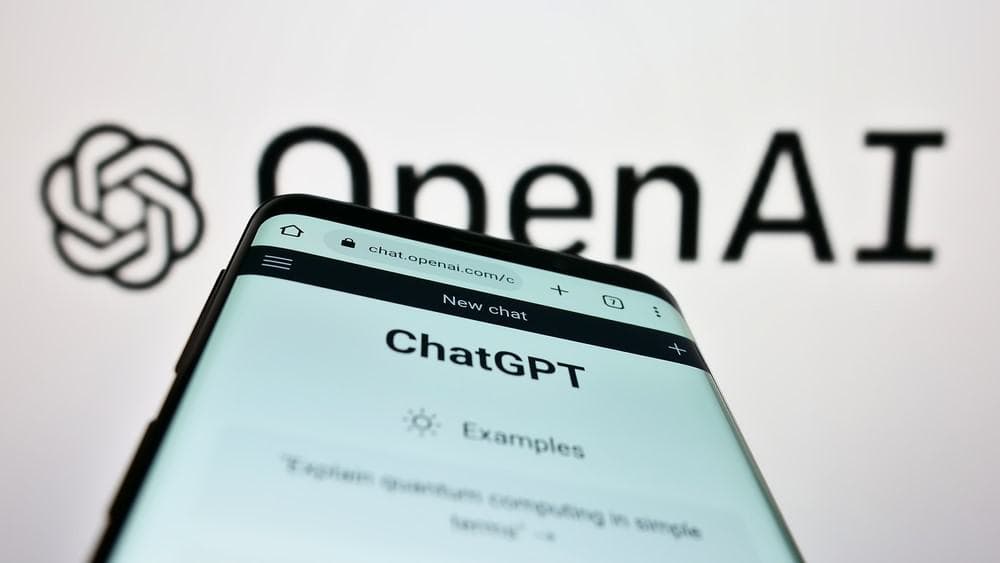#gpt-5
#gpt-5
[ follow ]
#openai #chatgpt #ai-models #user-feedback #ai-safety #ai #user-experience #ai-development #mental-health
fromZDNET
3 weeks agoChatGPT Go is just $10 a month - here's who gets it
ChatGPT Go includes everything offered in the Free plan with the addition of extended access to GPT-5, image generation tools, file uploads, Python and other data analysis tools, extended file upload access, and longer memory. The Go tier sits between ChatGPT Free, which offers limited access to features like fast response times, memory, data analysis, and vision, and ChatGPT Plus, a $20 monthly subscription with extended access to GPT-5, access to ChatGPT Agent, and more access to different models.
Artificial intelligence
fromArs Technica
1 month agoWith new agent mode for Excel and Word, Microsoft touts "vibe working"
Driven by OpenAI's GPT-5 large language model, Agent Mode is built into Word and Excel, and it allows the creation of complex documents and spreadsheets from user prompts. It's called "agent" mode because it doesn't just work from the prompt in a single step; rather, it plans multi-step work and runs a validation loop in the hopes of ensuring quality. It's only available in the web versions of Word and Excel at present, but the plan is to bring it to native desktop applications later.
Artificial intelligence
Artificial intelligence
fromTechCrunch
1 month agoDatabricks will bake OpenAI models into its products in $100M bet to spur enterprise adoption | TechCrunch
Databricks is integrating OpenAI models, including GPT-5, into its platform and Agent Bricks under a $100 million minimum deal to bring generative AI into enterprise data workflows.
fromFast Company
1 month agoI gave ChatGPT $500 of real money to invest in stocks. Its picks surprised me
When OpenAI launched its new GPT-5 model in August, the company bragged loud and hard about how GPT-5 is its "smartest, fastest, most useful model yet" and how interacting with it was like "chatting with a helpful friend with PhD‑level intelligence." When it comes to creative tasks like writing, GPT-5 immediately felt like a major step backward. But as I've tested the model more extensively, I've seen that it does excel at many pragmatic tasks like writing code and analyzing data.
Artificial intelligence
Artificial intelligence
fromRealpython
1 month agoEpisode #264: Large Language Models on the Edge of the Scaling Laws - The Real Python Podcast
LLM scaling is reaching diminishing returns; benchmarks are often flawed, and developer productivity gains from these models remain modest amid economic hiring shifts.
fromDevOps.com
1 month agoReport: ChatGPT-5 Coding Gains Come at a Higher Cost - DevOps.com
Based on over 4,400 Java tasks, the report finds that depending on which of the four levels of reasoning capabilities that OpenAI now makes available, the overall quality of the code, especially in terms of the vulnerabilities generated, significantly improves. However, the overall volume of code being generated per task also substantially increases, which creates additional maintenance challenges for application developers that are not going to be familiar with how code might have been constructed in the first place.
Artificial intelligence
Artificial intelligence
fromFortune
1 month agoBillionaire Microsoft CEO Satya Nadella reveals the 5 AI prompts he uses that can 'supercharge your everyday workflow'
CEOs increasingly integrate GPT-5 on Copilot into daily workflows to boost productivity with specific prompts, even as many executives fear AI-driven job loss.
Artificial intelligence
fromZDNET
2 months agoI retested GPT-5's coding skills using OpenAI's guidance - and now I trust it even less
GPT-5 produces inconsistent coding outcomes, sometimes succeeding or crashing, with prompt optimization offering help but introducing unpredictable behaviors that undermine trust.
fromFuturism
2 months agoAfter Disastrous GPT-5, Sam Altman Pivots to Hyping Up GPT-6
OpenAI's launch of its long-awaited GPT-5 AI model turned out to be a bit of a dud. Those expecting a revolutionary change, something CEO Sam Altman promised outright months ago, were left sorely disappointed. In many ways, GPT-5 felt more like an iterative improvement, while a colder and less personable tone took aback those looking to foster an emotional relationship with the bot.
Artificial intelligence
fromZDNET
2 months agoIs ChatGPT Plus still worth $20 when the free version offers so much - including GTP-5?
The premium plan called ChatGPT Plus guarantees access during blackout periods and includes access to OpenAI's most advanced models, making it attractive for superusers.
Artificial intelligence
fromBusiness Insider
2 months agoGPT-5 is meant for the casual user, not the advanced user. Here's why that's an upgrade.
OpenAI's GPT-5 signifies a major enhancement in AI intelligence, offering user-friendly interactions by routing tasks automatically to the most suitable model, making it accessible to all.
Artificial intelligence
fromThe Hacker News
2 months agoResearchers Uncover GPT-5 Jailbreak and Zero-Click AI Agent Attacks Exposing Cloud and IoT Systems
"We use Echo Chamber to seed and reinforce a subtly poisonous conversational context, then guide the model with low-salience storytelling that avoids explicit intent signaling," security researcher Martí Jordà said.
Privacy technologies
fromwww.theguardian.com
2 months agoOpenAI will not disclose GPT-5's energy use. It could be higher than past models
In mid-2023, querying GPT-5 for a recipe could consume several to 20 times more energy than previous models, indicating increased resource demands for advanced AI responses.
Artificial intelligence
[ Load more ]






























